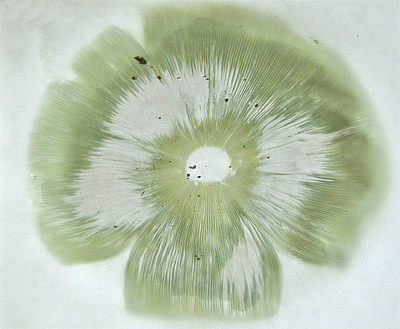
As we saw in the Scavengers and Decomposers video, mushrooms play a major role in the food web as decomposers, breaking down wood and other plant material, and putting some of that energy back into the food web. There are over 14,000 species of mushrooms, and many of them look very similar. We use many different characteristics to identify them, including their shape, their color, their texture, where they grow, and many other things. One important test that can help identify a mushroom is its spore print. Spore prints are easy to make, and some are quite beautiful.
Safety Warning
Many species of mushrooms are poisonous. Never eat wild mushrooms, unless you have an expert to help you identify them. Be sure to place the mushrooms for this experiment in a place where young children and pets cannot get to them. Always wash your hands after handling the mushrooms.
To make a spore print, you will need:
- white paper
- black paper
- one or more mature mushrooms
- scissors or a knife
- clear, acrylic spray (optional)
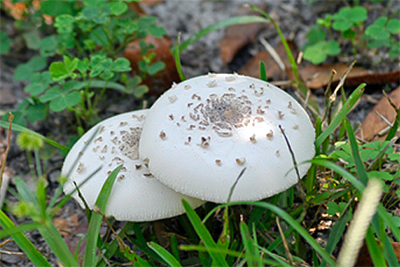
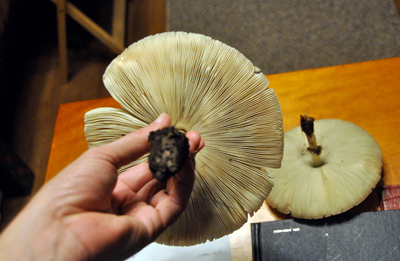
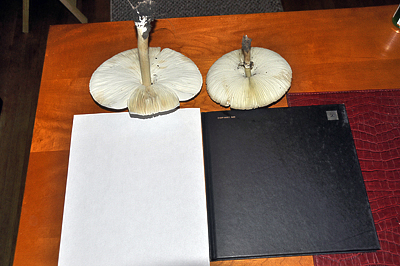


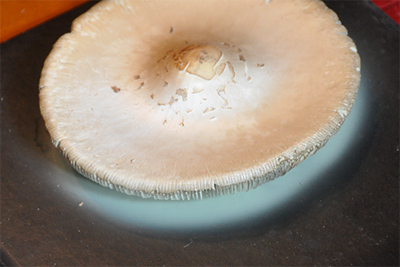
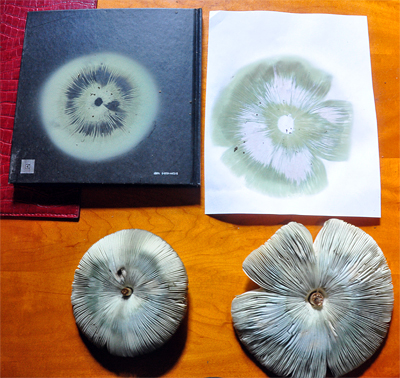
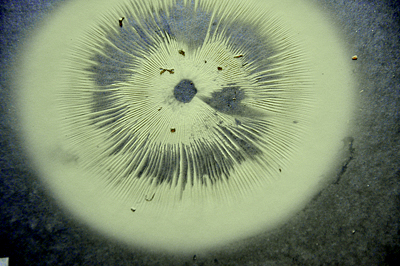
First you will need some mushrooms. They need to be mature, which means that they have opened fully, often into the shape of an open umbrella. If you don't have any mushrooms growing around your house, you can usually buy them at your local grocery store. You don't want the small, white, button mushrooms. They are not mature yet. Instead, look for the pancake shaped Portabella mushrooms. That is what the button mushrooms would look like if they grew and matured.
Looking at the underside of the mushroom, you may see many thin ridges and grooves radiating from the center. These are the gills. No, they are not used for breathing like the gills of a fish, but they have a similar shape. The gills are where the spores are produced. OK, so what are spores? Spores do much the same job for mushrooms that seeds do for flowering plants. The difference is that mushroom spores are very tiny (You usually need a microscope to see an individual spore.), they don't contain the stored food that seeds have, and they don't have to be pollinated. Each tiny spore is capable of growing into a new mushroom. Not all mushrooms have gills. Some have pores or other openings, but they can still produce spore prints.
If possible, collect two specimens of each type of mushroom. Why? Some mushrooms have white spores, while others have dark colored spores, so for each kind of mushroom, we will put one on white paper and the other on black paper. If the mushroom has white spores, they will be hard to see on the white paper, but will stand out on the black paper. If the spores are dark, then the white paper will make them easy to see.
You want the mushroom to lie flat on the paper, so use scissors or a sharp knife to remove the stem. As you do that, watch closely. Many mushrooms will change color when they are cut or broken. This mushroom was white when it was first cut, but within seconds the cut changed to a dark, rusty red. That color change is another useful trait that can help you identify mushrooms. Not all mushrooms have dramatic color changes, so if you are using a Portabella, you will probably not see much at first, but it will slowly darken.
Place the mushrooms with the gill side down on the sheets of paper. Put them in a place where they will not be disturbed, and let them sit overnight. The spores are so small that even a gentle breeze can carry them away, so if you have a fan or air vent nearby, you should cover the mushrooms with a bowl or a box. As the mushroom sits there, it releases spores, which fall onto the paper.
By the following morning, you will probably be able to see a dusting of spores on the paper at the edge of the mushroom. Very carefully, lift the mushroom off of the paper, being sure not to let it shift or slide. Underneath, you should find a spore print in the shape of the mushroom, usually showing the pattern of the gills.
Different mushrooms form different colored spores. This one had spores that were a very nice green color. You can preserve your spore print by very gently spraying it with a clear, acrylic spray. This spray is often used to protect art projects. Don't hold the spray can too close, as that will blow away many of the spores, and form drips that will mess up your spore print.
On the sheet of paper, write the date and location where the mushroom was collected. You might want to attach a photograph or drawing, and any other information about color changes when cut, texture, shape, etc. If you are able to identify your mushroom, then write its common name and its scientific name on the paper too. You may want to start a collection of mushroom spore prints, and might even decide to become a Mycologist, a scientist who studies mushrooms and other fungi.
